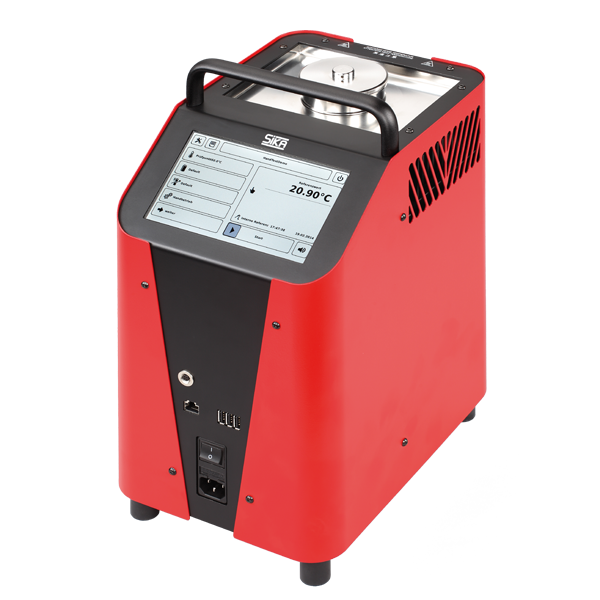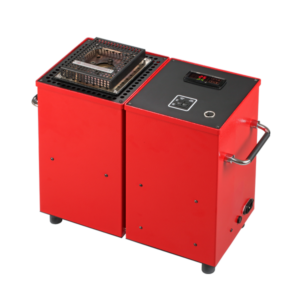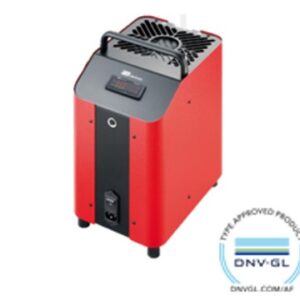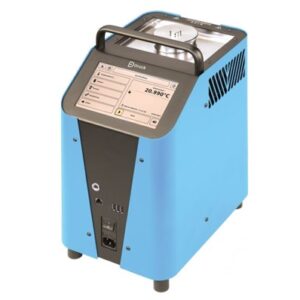Categories
SIKA Temperature Calibrator | TP3M165E.2
- Assembly and commissioning
- Manufacturing and production
- Maintenance and service
- Quality assurance and test equipment monitoring
- Repair
SIKA temperature calibrators can be used everywhere, including on site in workshops, test and measurement rooms as well as laboratories. They cover a broad spectrum of industries with diverse applications.
- Assembly and commissioning
- Manufacturing and production
- Maintenance and service
- Quality assurance and test equipment monitoring
- Repair
Description
Micro bath function
The use of calibration liquids offers certain advantages if temperature sensors with an unusual shape and size are to be tested. The test item is immersed directly into the liquid without an insulating air gap, resulting in direct temperature contact between the calibrator and the test item. The liquid, such as silicone oil, is chosen depending on the calibration temperature required. The continuous adjustment of the magnetic stirrer together with the removable sensor basket agitates the calibration liquid to create a large measuring zone. Furthermore, the sensor basket guarantees unhindered stirring and helps protect the tank floor.
Dry-block function
The optimum thermal coupling from the block to test item is achieved with the correct adapter sleeve. Ideally, the internal diameter of the sleeve is 0.5 mm larger than the outer diameter of the test item. With the aid of the adapter sleeve, straight temperature sensors of virtually any length and diameter can be calibrated. The dry block covers the entire temperature range without the need to change the calibration medium. Viscosity, flash points or outgassing are of no concern.
Black body function
A patented infrared calibration sleeve is used to calibrate IR pyrometers or thermal imaging cameras. The special surface structure and the asymmetrical shapes create a „cavity radiator“ with an emission factor of 0.9994, prevent the reflection of interference radiation and emit the required temperature in an ideal form. The pyrometer is simply held at the specified distance above the measurement opening, thereby forming the desired measurement area on the bottom for the calibration to be performed. A support base can be fitted directly on the unit.
Surface temperature function
Surface temperature sensors are calibrated using special sleeves that are fitted vertically with the required contact force. Switching calibration control to the external reference sensor creates the best possible temperature reference point on the surface of the sleeve. The reference sensor is located directly beneath the abutting face of the sleeve. The sleeve is designed in such a way that the best temperature homogeneity is achieved in the centre of the abutting face. The special design of the abutting face enables good thermal contact. There is no need to use a thermally conductive paste or other thermal conduction aids.





